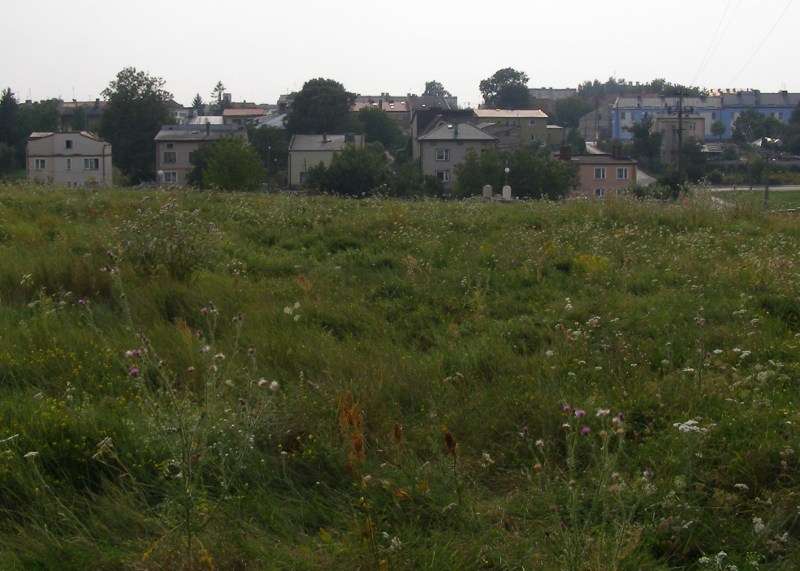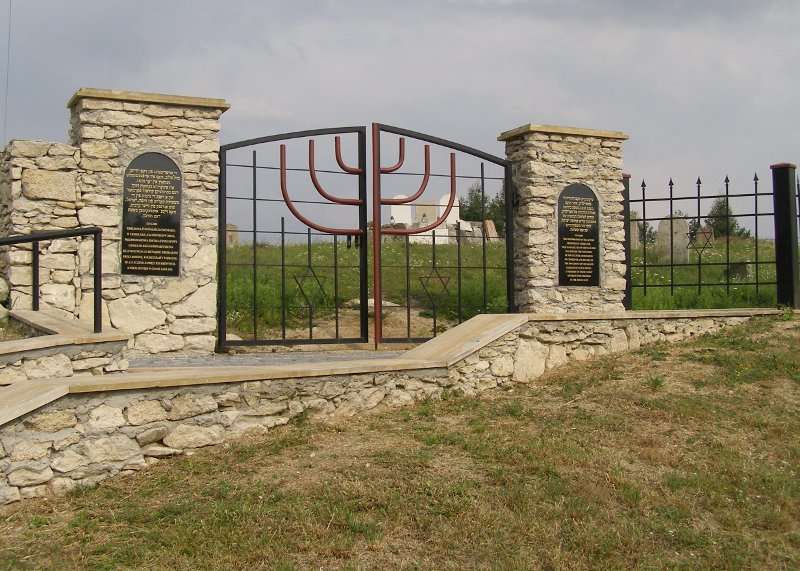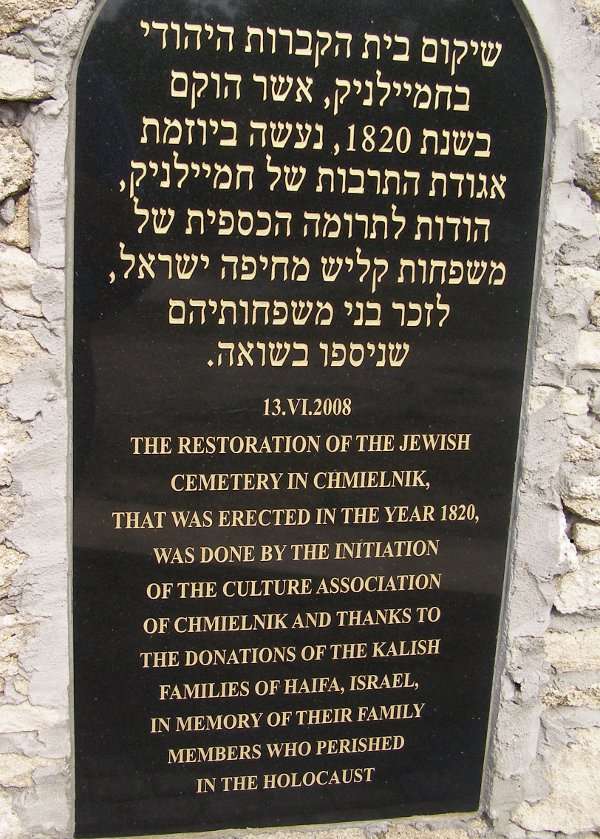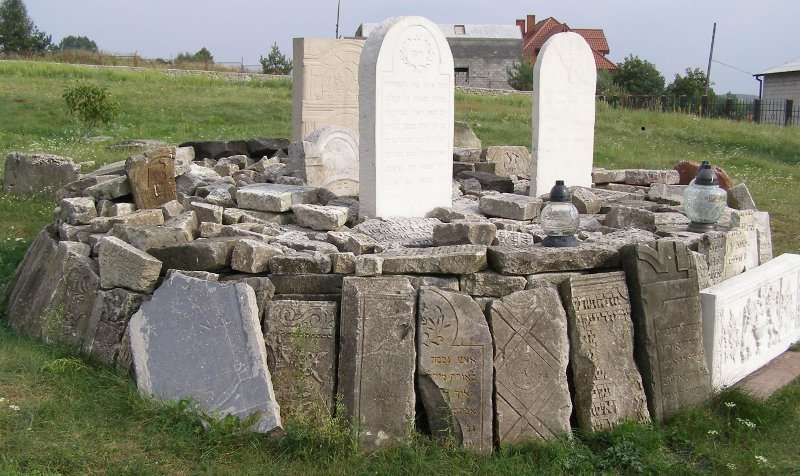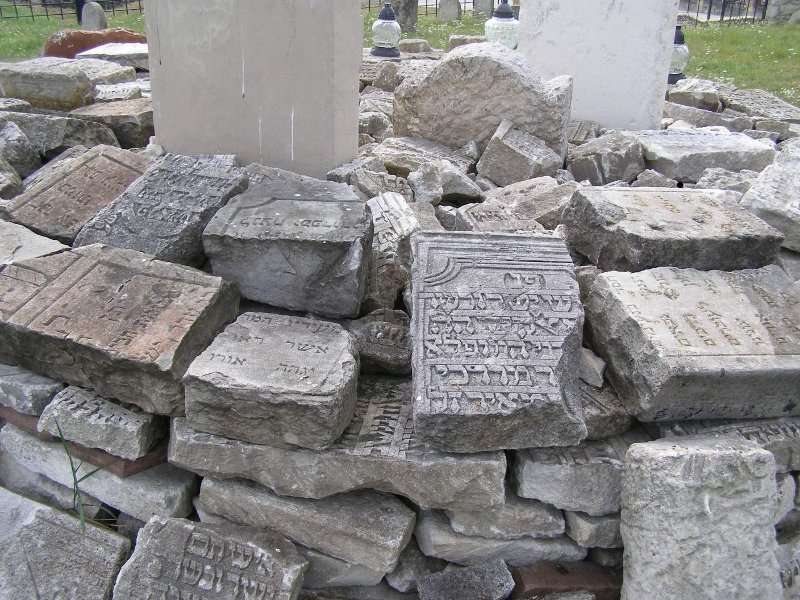
Alternate names: Chmielnik [Pol], Khmelnik [Rus], Russian: Хмельник. כמיעלניק-Yiddish. 50°38' N, 20°45' E, 14 miles SSE of Kielce, 16 miles NNW of Stopnica. Yizkor: Pinkas Chmielnik; Yisker bukh noch der Khorev-Gevorener Yidisher Kehile (Tel Aviv, 1960. 1900 Jewish cemetery: 5,671. A town in Kielce County, Świętokrzyskie Voivodeship with a 2006 population of 4,005, the town's name is derived from hop (Polish: chmiel). Before WWII, Chmielnik's population was 90% Jewish (about 10,000 Jews and less than 1,000 Poles). A Judenrat formed shortly after the German occupation in September 1939; the ghetto was created in spring 1941 and liquidated in November 1942. About 13,000 Jews from Chmielnik and surrounding towns lived in the ghetto, most working in highway construction and repair. In October 1942 about 8,000 persons were deported to Treblinka. The rest were transferred to Stopnica, and from there to Treblinka. Only four Jewish residents had survived.A synagogue building built between 1630 and 1634 still exists. photos of Jewish Chmielnik. Also see SIEDLEZCKA. [April 2009]
CEMETERY: photos of gravestone/s. Gravestone photos. Two cemeteries existed. Video of cemetery rededication on June 13, 2008.
Old Cemetery: The older one created in the Middle Ages by the northern wall of the synagogue within the town had no room for expansion. The result was layered burials with a layer of soil creating a new burial space. In the early 1800's, the local administration banned use of the old cemetery for sanitary reasons and established a new one although the Jews did not comply with the order. The graveyard was closed and sealed. [April 2009]
New Cemetery: Created in 1820 at Mrucza and Mala Streets with a fence, during WWII the cemetery was almost completely destroyed by the Nazis. About 250 Jews killed during the Holocaust were buried there. In "Jews in the History of Chmielnik" by M. Maciagowski and P. Krawczyk mentions: "A mountain of dead bodies appeared before our eyes. A huge hole was dug out next to it. There were a few men in the hole, placing the bodies of the dead - men, women, and children. They were spilling some disinfecting substance in that hole (....) masses of bloody corpses in horrible agony." For many years only traces of graves were visible. In 2008, the Chmielnik Culture Association and the Kalisz family from Haifa fenced and cleaned the cemetery. Matzevot were recovered and a small monument erected. [April 2009]
REFERENCE: Chmielniker Sick and Benevolent Society (New York, N.Y.) Records, 1935-1978. Description: .7 linear ft. Notes: Landsmanshaft organized in 1929 by Jewish immigrants from Chmielnik, Kielce province, Poland, as the Chmielniker Sick and Benevolent Society of Poland, Inc. ... cemetery map; and memorial book, 1960. YIVO collections are in Yiddish, Russian, Polish, English, Hebrew, and other European and non-European languages. Location: YIVO Institute for Jewish Research, New York, NY. Control No.: NXYH90-A50 [December 2000]
REFERENCE: Gruber, Ruth Ellen. Jewish Heritage Travel A Guide to East-Central Europe. New York: John Wiley & Sons, Inc., 1992. p. 43
US Commission No. POCE000273
US Commission CHMIELNIK I:
Cemetery: Plac Targowy/ Market Place. 1990 town population: 5,000-25,000 with no Jews.
- Town: Burmistrz Miasta Chmielnik, 28-110, Chmielnik, ul. Kojcinjzki 15, tel. 132.
- Local: Wojewodzki Konserwator Zabytkow, ul IX Wiekow Kielce 3, Kielce, tel. 45634.
- Interested: Adam Penkalla.
US Commission CHMIELNIK II: US Commission No. POCE000296
The cemetery is located on Wspolna Street. The landmarked Orthodox and Conservative Jewish cemetery was established in 1565 with the last burial in 1942. The isolated urban flat land has no sign or marker. Reached by turning directly off a public road, access is open to all via a broken masonry wall with non-locking gate. The size of the cemetery before WWll and now is 0.2 hectares. There are no gravestones, mass graves, or structures. Municipality owns site used as a Jewish cemetery. Adjacent properties are residential. Private Jewish visitors rarely visit. The cemetery was vandalized during WWll. There has been no maintenance or care. Moderate threats are security, weather, vegetation, and incompatible nearby development.
Photos of New Cemetery courtesy of This email address is being protected from spambots. You need JavaScript enabled to view it..
Photos by Charles Burns [February 2016]

